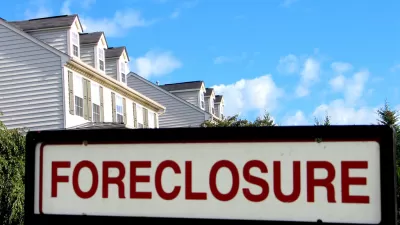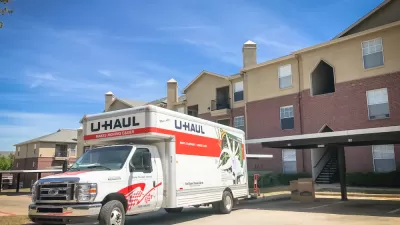Here’s what the federal government should do to grab the opportunity to create affordable housing.

Evidence of tremendous strain on tens of millions of renters across America continues to mount. Among renters in so-called Class C properties—rental properties that cater to lower-wage workers and families hit particularly hard by the pandemic—the percentage paying in full has dropped off from 46 percent to 24 percent since April, with only 12 percent of such renters paying in full on the first of October.
By now, the $1,200 stimulus checks have long since been spent. Although over 30 million Americans may be currently out of work, the $600/week extra unemployment payments ended, and Republicans in Congress oppose reinstating that benefit. Federal eviction protections (other than a recent limited public health order), and most state moratoriums, expired in late July. As a result, predictions range from 28 million to 40 million tenants at risk of evictions in the coming months, which is about 25 percent of America’s renter population. Displacement on that scale would vastly dwarf the roughly 3 million foreclosures of 2009 when the country plunged into a deep recession.
The best governmental responses to this impending disaster would be extending income benefits to unemployed Americans, providing special rental subsidies to protect tenants and support landlords, and continuing eviction and foreclosure relief.
While some states and localities are stepping up to meet the need, this support will fall vastly short of the estimated $100 billion needed. And when tenants can’t pay rent, landlords can’t pay mortgages, local taxes, or the operating expenses that allow homes to be well maintained and habitable.
This means, without federal action, there likely will be a huge wave of real estate defaults, workouts, distressed sales, and foreclosures. It does not take a crystal ball to see an impending real estate downturn.
Private Capital Is Waiting
History has taught time and again, such as during the Savings & Loan crisis of the late 1980s and the Great Recession’s foreclosure crisis of the late 2000s, that private actors stand poised to deploy capital to leverage buying opportunities when properties pass through public hands. Far too often, public agencies fail to take the long view of assets they control, or consider prioritizing public needs when developing disposition plans. Public purpose and broad mission carry little sway against the pressure to minimize current losses and reduce property inventory counts. Yet a short-term focus fails to serve the larger goal, and likely leaves society worse off in the long run.
In the current moment, we must ...
FULL STORY: Real Estate Defaults Are Coming. Don’t Waste Them.

Montreal Mall to Become 6,000 Housing Units
Place Versailles will be transformed into a mixed-use complex over the next 25 years.

Planetizen Federal Action Tracker
A weekly monitor of how Trump’s orders and actions are impacting planners and planning in America.

California High-Speed Rail's Plan to Right Itself
The railroad's new CEO thinks he can get the project back on track. The stars will need to align this summer.

Nevada Legislature Unanimously Passes Regional Rail Bill
If signed by the governor, the bill will create a task force aimed at developing a regional passenger rail system.

How Infrastructure Shapes Public Trust
A city engineer argues that planners must go beyond code compliance to ensure public infrastructure is truly accessible to all users.

Photos: In Over a Dozen Cities, Housing Activists Connect HUD Cuts and Local Issues
We share images from six of the cities around the country where members of three national organizing networks took action on May 20 to protest cuts to federal housing funding and lift up local solutions.
Urban Design for Planners 1: Software Tools
This six-course series explores essential urban design concepts using open source software and equips planners with the tools they need to participate fully in the urban design process.
Planning for Universal Design
Learn the tools for implementing Universal Design in planning regulations.
City of Camden Redevelopment Agency
City of Astoria
Transportation Research & Education Center (TREC) at Portland State University
Municipality of Princeton (NJ)
Regional Transportation Commission of Southern Nevada





























